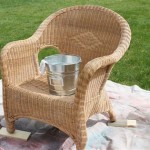Consignment Furniture Bay Area, CA: A Smart Choice for Buyers and Sellers
The Bay Area of California presents a unique landscape for the furniture market. High costs of living, frequent moves, and a strong emphasis on sustainability contribute to the popularity of consignment furniture. Consignment furniture offers an appealing alternative to buying new, providing opportunities for both buyers to acquire stylish pieces at reduced prices and sellers to recoup value from unwanted items.
This article will explore the benefits and considerations surrounding consignment furniture in the Bay Area, focusing on the perspectives of both buyers and sellers. It will delve into the types of furniture commonly found in consignment shops, the process of consigning items, and provide useful tips for navigating the consignment market in this competitive region.
Understanding Consignment Furniture: What It Is and How It Works
Consignment is a business arrangement where an owner (the consignor) leaves goods in the possession of another party (the consignee) who sells the goods. The consignor retains ownership of the goods until they are sold. The consignee, in this case, the furniture store, displays and sells the items to customers. When an item sells, the consignee pays the consignor an agreed-upon percentage of the sale price, keeping the remaining amount as commission. This model differs from a resale shop, where the store purchases the items outright from the seller.
The specific terms of a consignment agreement, including the commission split, the consignment period, and the pricing strategy, can vary significantly between different consignment stores. It is crucial for both buyers and sellers to carefully review and understand the terms of the agreement before proceeding.
One significant advantage of consignment is that the consignor is not responsible for storing or marketing the furniture. The consignment store handles these aspects, freeing up space and time for the seller. Conversely, the consignee benefits from offering a diverse selection of furniture without having to invest in purchasing inventory upfront.
For buyers, consignment furniture offers the potential to acquire high-quality, unique pieces at prices lower than retail. This is especially attractive in the Bay Area, where the cost of new furniture can be prohibitive. Additionally, buying consignment furniture contributes to a more sustainable lifestyle by extending the lifespan of existing items and reducing the demand for new resources.
Benefits for Sellers: Why Consign Your Furniture in the Bay Area?
Several factors make consigning furniture an attractive option for sellers in the Bay Area. Given the region's frequent relocations and downsizing trends, many individuals find themselves with furniture they no longer need or have space for. Consignment provides a convenient way to dispose of these items while recovering some of their original value.
Selling furniture independently through online marketplaces can be time-consuming and cumbersome. It requires taking photographs, writing descriptions, coordinating with potential buyers, and arranging for pickup or delivery. Consignment eliminates these hassles, allowing sellers to entrust the entire process to the consignment store.
Consignment stores often have an established clientele of buyers seeking quality used furniture. This can result in quicker sales and potentially higher prices compared to selling directly to individuals who may be looking for the lowest possible price. Furthermore, reputable consignment stores curate their inventory, ensuring that only items in good condition and with desirable style are accepted. This contributes to a more upscale shopping experience and can attract a more discerning clientele.
The commission structure of consignment can be beneficial for sellers, particularly for higher-value items. While the seller does not receive the full sale price, the commission covers the store's expenses for marketing, storage, and staffing. For many individuals, the convenience and potential for a higher sale price outweigh the commission fee.
Beyond financial benefits, consigning furniture can also be viewed as an environmentally responsible choice. By giving furniture a second life, it reduces waste and minimizes the demand for new manufacturing, which can have significant environmental impacts.
Benefits for Buyers: Why Explore Consignment Furniture Options?
The Bay Area's inflated real estate market often necessitates creative solutions for furnishing homes. Consignment furniture offers a budget-friendly alternative to purchasing new furniture, allowing buyers to furnish their spaces with stylish and high-quality pieces at significantly reduced prices. This is particularly appealing to first-time homebuyers, renters, or those on a tight budget.
Consignment stores often carry a diverse range of furniture styles, from vintage and antique pieces to modern and contemporary designs. This provides buyers with the opportunity to find unique and one-of-a-kind items that cannot be found in mass-market furniture stores. The eclectic nature of consignment inventory can add character and personality to any home.
In addition to affordability and style, buying consignment furniture is also a sustainable practice. By purchasing used furniture, buyers contribute to reducing waste and minimizing the environmental impact associated with furniture manufacturing. This aligns with the values of many Bay Area residents who prioritize environmentally conscious choices.
The condition of consignment furniture can vary, but reputable consignment stores carefully inspect items before accepting them for sale. This ensures that buyers are purchasing furniture that is in good working order and free from major defects. While some items may show signs of wear, this can often add to their charm and character.
The shopping experience at consignment stores can be more personalized and engaging compared to big-box furniture retailers. Consignment store staff are often knowledgeable about the history and provenance of the furniture they sell, providing valuable insights to buyers. Furthermore, the smaller scale of consignment stores often fosters a more intimate and friendly shopping environment.
Key Considerations for Sellers: Preparing Your Furniture for Consignment
To maximize the chances of your furniture being accepted and selling at a good price, it is essential to prepare it properly before taking it to a consignment store. The first step is to thoroughly clean all items. Remove dust, dirt, and stains. Polishing wood furniture and cleaning upholstery can significantly improve its appearance. Minor repairs, such as tightening screws or gluing loose joints, can also increase the value of the furniture.
Before contacting a consignment store, take clear and well-lit photographs of each item. These photos will help the store assess the condition and style of the furniture and determine if it is a good fit for their inventory. Be honest about any flaws or imperfections. Transparency builds trust with the consignment store and avoids potential misunderstandings later on.
Research different consignment stores in the Bay Area to find one that specializes in the type of furniture you are selling. Some stores focus on vintage or antique pieces, while others cater to a more modern aesthetic. Choosing a store that aligns with your furniture's style will increase its visibility to potential buyers.
Be prepared to negotiate the consignment terms with the store. The commission split, consignment period, and pricing strategy are all negotiable. It is important to understand the store's policies and be comfortable with the terms before signing an agreement.
Finally, be realistic about the value of your furniture. While sentimental value is important, the market value may be lower than your expectations. Research similar items online to get a sense of their current market price. Consulting with the consignment store owner can also provide valuable insights into pricing.
Key Considerations for Buyers: Evaluating Consignment Furniture
Before purchasing consignment furniture, it is crucial to carefully inspect each item for any signs of damage or wear. Check for structural integrity, such as loose joints, cracks, or wobbling legs. Examine upholstery for stains, tears, or fading. Test drawers and doors to ensure they open and close smoothly.
Consider the style and design of the furniture in relation to your existing décor. Measure the dimensions of the furniture to ensure it will fit in your space. Bring a tape measure and a notepad to record measurements and make notes about the furniture's condition and features.
Don't be afraid to ask questions about the furniture's history and provenance. The consignment store staff may be able to provide valuable information about the item's origins, materials, and previous owners. This can add to the value and appeal of the furniture.
Negotiate the price if possible. Consignment stores are often willing to negotiate, especially if the item has been on the floor for a while or if you are purchasing multiple items. Be polite and respectful, and offer a reasonable counteroffer.
Finally, be aware of the consignment store's return policy. Some stores may offer returns or exchanges, while others may have a strict no-return policy. Understand the store's policy before making a purchase.
Navigating the Bay Area Consignment Furniture Market
The Bay Area offers a diverse range of consignment furniture stores, each with its own unique inventory and style. Researching different stores online and visiting them in person is essential to finding the right pieces for your needs. Online reviews can provide valuable insights into the reputation and customer service of different stores.
Consider the location of the consignment store. Some stores are located in urban areas, while others are located in more suburban or rural areas. The location can affect the type of furniture they carry and the prices they charge.
Be patient and persistent. Finding the perfect piece of consignment furniture can take time. Visit stores regularly and check their online inventory frequently. New items are added daily, so it is important to stay informed.
Building a relationship with the consignment store staff can be beneficial. They may be able to notify you when new items arrive that match your interests. They can also provide valuable advice and guidance on furniture selection and care.
Ultimately, the consignment furniture market in the Bay Area offers a wealth of opportunities for both buyers and sellers. By understanding the nuances of the consignment process and following the tips outlined in this article, individuals can successfully navigate this market and find unique and affordable furniture solutions.

Top 10 Best Consignment Furniture In San Francisco Bay Area Ca Updated 2025 Yelp

San Rafael Furniture Consignment Store Home Center

San Rafael Furniture Consignment Store Home Center

Top 10 Best Consignment Furniture In San Francisco Bay Area Ca Updated 2025 Yelp

Top 10 Best Used Furniture Stores In San Francisco Ca Updated 2025 Yelp

Used Furniture In Northern Anson S Salvage

Poor Honeys Too A Quality Secondhand Furniture Store

Top 10 Best Consignment Furniture In San Francisco Bay Area Ca Updated 2025 Yelp

Buy Sell Furniture On Consignment Home Center

Design Plus Consignment Gallery Updated August 2025 161 Photos 171 Reviews 333 8th St San Francisco Furniture Stores Phone Number Yelp







